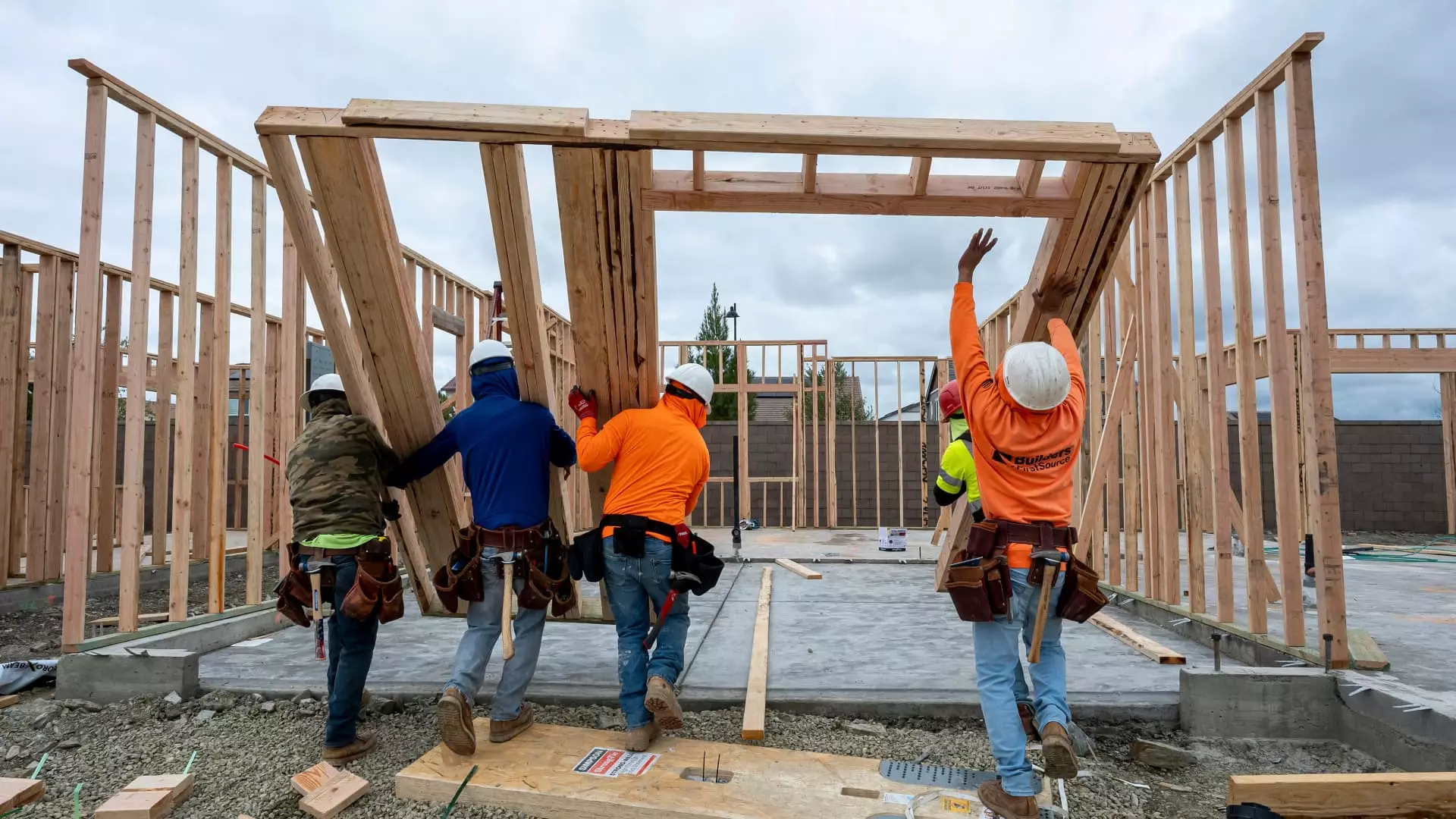The current landscape of the housing market paints a sobering picture for homebuilders and aspiring homeowners alike. As reported by the National Association of Home Builders (NAHB) and Wells Fargo, builder sentiment experienced yet another dip, dropping to an alarming 32 on their Housing Market Index (HMI) for June—well below the neutral mark of 50. This decline can’t be dismissed as mere statistical noise; it signals a broader crisis in which high mortgage rates and pervasive economic uncertainty have stifled consumer confidence. The stark reality is that this feeling of dread among builders hasn’t been this profound since the dark days of April 2020 and December 2022, times when the pandemic cast shadows on the economy.
When builder sentiment diminishes, it often has a cascading effect on the dreams of homeownership. The components of the index tell a dismal story. Current sales conditions plummeted to 35, while expectations for future sales dropped to 40. Perhaps most troubling of all is the buyer traffic metric, which fell to a record low of 21—a stark indicator of how hesitant consumers have become in this market. Buyers are increasingly unwilling to plunge into an environment rife with uncertainty, with elevated mortgage rates acting as the proverbial icy chill freezing their ambitions to acquire homes.
The Tempest of Affordability
As the clouds of economic turbulence loom overhead, builders are scrambling to devise strategies to entice potential homebuyers back into the market. In this desperate climate, we see a startling trend: 37% of builders are now cutting prices—an uptick from previous months. A price reduction may seem like a viable solution, yet a 5% decrease will likely leave countless potential buyers desiring more substantial concessions on affordability. It highlights a grim irony: as prices adjust downward, the market itself becomes a louder echo of its own troubles.
The current predicament draws into sharp focus the concept of affordability, which seems to flicker dimly on the horizon. As Robert Dietz, the chief economist for the NAHB, expressed, rising inventory levels paired with buyers holding on just might shift the scales towards a distressing scenario of price declines in multiple markets. When consumer confidence is waning, price reductions may only serve to remind both builders and buyers of an ugly truth: affordability isn’t just a figure on a worksheet; it’s a pressing social concern that demands immediate attention.
The Reality of Regional Disparities
Diving deeper into this quagmire, a closer examination of the regions reveals a disheartening divide. The South and West are reportedly experiencing the weakest builder sentiment, and these regions account for a significant majority of the nation’s new constructions. The irony here is palpable: the areas where dreams of homeownership should flourish are instead grappling with the harsh reality of market instability.
Homebuilder Lennar’s recent earnings report exemplifies the broader trend of shrinking confidence. An average price drop of nearly 9% from the previous year mirrors the uncertainty permeating the market. Lennar’s co-CEO, Stuart Miller, acknowledged the challenges posed by high mortgage rates and weakened consumer confidence, indicating that an increasing number of builders are left with no choice but to resort to incentives to drive sales. This trend reveals a chilling irony where the act of incentivizing sales to make homes accessible further underscores the alarming disconnect between supply and demand.
A Call for Thoughtful Solutions
In addressing this stormy chapter in the housing market, it’s crucial to advocate for not just temporary band-aid solutions but also long-term, thoughtful strategies aimed at tackling the fundamental issues of affordability and economic stability. While price reductions might temporarily stimulate interest, they must be paired with broader efforts to create more sustainable pathways to homeownership. Government policies aimed at easing the burden of mortgage rates, coupled with deliberate investments in affordable housing, can deliver the systemic change that is sorely needed.
The time has come to acknowledge that the housing market should not merely be a battleground for profit but rather a foundation for community building. In fairness, this is a critical juncture that calls for innovative policies and an unwavering commitment to fostering environments where dreamers can transform aspirations into reality—even when the construction rubble feels insurmountable. The road ahead is fraught with challenges, yet within these difficulties lies an opportunity for comprehensive change and renewed hope in the housing landscape.

